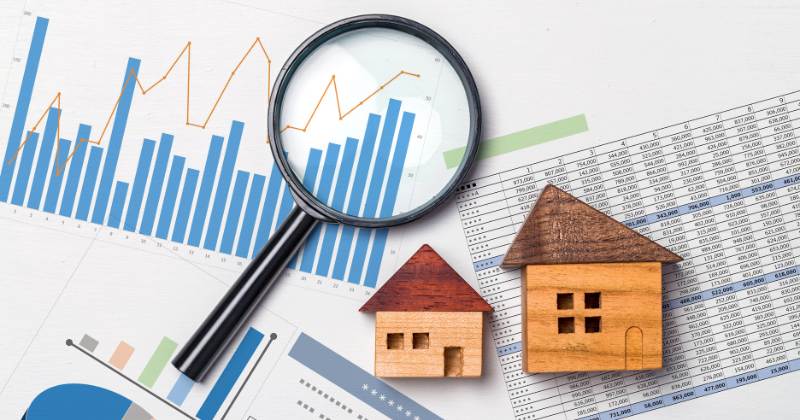Buying or selling a home is one of the biggest financial decisions you'll make—so having the right realtor by your side is crucial! A great real estate agent can help you get the best price, navigate negotiations, and avoid costly mistakes. But with so many options, how do you choose the right one?
Whether you're buying a home in Surrey, selling in Langley, or investing in real estate, here’s everything you need to know about picking the perfect realtor.
Why Choosing the Right Realtor Matters
Your realtor isn’t just someone who lists homes or books showings—they’re your trusted guide in the real estate journey. A top-notch agent will:
✅ Price homes accurately to get you the best deal
✅ Negotiate on your behalf to save you money
✅ Handle complex paperwork so you don’t miss key details
✅ Offer local market expertise to help you make informed decisions
✅ Make the process stress-free by guiding you every step of the way
Bottom Line: The right realtor can be the difference between a smooth, successful transaction and a frustrating experience.
What to Look for in a Realtor
1. Experience in the Surrey & Fraser Valley Market
Surrey’s real estate market is unique, and each neighborhood—from Fleetwood to South Surrey—has its own trends. You need a realtor who understands local pricing, demand, and upcoming developments.
✔️ Ask how long they’ve been working in Surrey & Fraser Valley real estate.
✔️ Look for a realtor who specializes in the type of property you’re buying or selling.
💡 Pro Tip: If you’re buying a pre-sale condo in Surrey Central, an agent with developer connections can help you get early access to units!
2. Strong Track Record & Client Reviews
The best way to judge a realtor? Past success stories!
✔️ Check online reviews on Google, Facebook or Realtor(dot)ca
✔️ Ask for references from past clients.
✔️ Look at their recent sales—are they getting top dollar for sellers? Are they securing good deals for buyers?
💡 Red Flag: If a realtor has poor reviews or avoids showing past results, it may be a sign to look elsewhere.
3. Marketing Strategy for Sellers
If you’re selling, your realtor should have a solid marketing plan to attract the right buyers. Ask about:
✔️ Online exposure – Will your home be listed on MLS, social media, and real estate websites?
✔️ Professional photos & videos – Listings with high-quality images sell faster!
✔️ Virtual tours & open houses – How will they showcase your home to buyers?
💡 Surrey Tip: Many buyers in Surrey come from Vancouver and overseas markets—your realtor should know how to market beyond local buyers!
4. Negotiation Skills
A great realtor isn’t just there to show homes—they should be an expert negotiator who fights for your best interests.
✔️ For Buyers: Will they negotiate to lower the price or secure better terms?
✔️ For Sellers: Can they handle multiple offers and get you the best deal?
💡 Ask Them: "Can you share a time when you negotiated a great deal for a client?" Their response will tell you a lot about their skills!
5. Availability & Communication
Real estate moves fast, and you need a realtor who’s responsive and keeps you updated.
✔️ How quickly do they return calls or emails?
✔️ Do they explain things clearly and patiently?
✔️ Will they be available for showings & appointments when needed?
💡 Red Flag: If they take days to respond or seem too busy for you, they may not be the right fit!
Questions to Ask a Realtor Before Hiring Them
📌 For Buyers:
1️⃣ How well do you know the Surrey real estate market?
2️⃣ Can you help me find homes before they hit the market?
3️⃣ How do you handle multiple-offer situations?
4️⃣ What’s your experience with first-time homebuyers or investors?
📌 For Sellers:
1️⃣ How will you price my home competitively?
2️⃣ What’s your marketing strategy to attract buyers?
3️⃣ How do you handle offers and negotiations?
4️⃣ Have you sold homes in my neighborhood before?
💡 Pro Tip: A great realtor will answer confidently, provide examples, and show enthusiasm for helping you!
Why Work with Future Assets Group?
At Future Assets Group, we specialize in helping buyers, sellers, and investors in Surrey, Langley, and the Fraser Valley navigate the real estate market with confidence.
🏡 For Buyers: We’ll help you find the perfect home at the right price, whether you’re a first-time buyer or an experienced investor.
🏡 For Sellers: Our marketing strategies will get your home sold fast and for top dollar.
🏡 For Investors: We’ll help you find high-return investment properties in Surrey’s booming real estate market.
📞 Thinking about buying or selling? Let’s chat! Contact us today for expert real estate advice.
%20(1)%20(1)%20(1).png)
%20(1).png)














